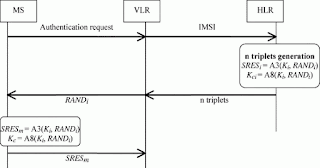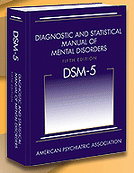As you might remember, the FDA stomped on 23andMe for using too many irresponsible genetic tests that purported to tell you things about yourself and your health with limited support. They eventually worked out a deal where the FDA allowed 23andMe to continue to operate, but they couldn’t claim to be able to predict personal outcomes from your genes.
That means if we want to use 23andMe irresponsibly, we’ve got to do it ourselves. Luckily I recently figured out how to do this and it is exactly as much fun as you would think.
If you’ve got a 23andMe account, log in, go to your name and picture on the bar on the top, and click on the little inverted triangle to get the drop-down menu. Go to the “Browse Raw Data” option, which will give you the option to go to a gene or an SNP. Now all you have to do is find an SNP you’re interested in (an SNP will look like the letters “rs” followed by a string of numbers) plug it in, and interpret the results.
Your best bet here is SNPedia, a wiki collection of different SNPs. If you want to know, for example, something interesting about your risk of heart disease, you can search “heart disease” and get a list of the most relevant SNPs (in this case, rs2383206, rs10757278, rs2383207, and rs10757274). If you click on the first, you can find on the top right in little colored boxes that someone with (A;A) at this site has normal risk of heart disease, someone with (A;G) 1.4x increased risk, and someone with (G;G) 1.7x increased risk.
In this case my 23andMe results are pretty straightforward – it tells me I am (G;G), which is common enough in white people (see the little colored bars on the left of SNPedia; the CEU bar is Caucasian Europeans). Other times the results require an extra step. For example, SNPedia’s page on rs1801133 offers three choices – (C;C), (C;T), and (T;T), but 23andMe tells me that I have (A;A), which didn’t appear to be an option. The problem here is that 23andMe is giving me the minus strand – if you click to expand your result, it will tell you that (“dbSNP Orientation: minus”). When it gives you the minus strand, you have to manually reverse it to get the plus strand. Remember, A is the reverse of T, and C is the reverse of G. So my (A;A) is their (T;T), and I have 1.5x risk of various cancers.
This doesn’t necessarily bear any relationship to reality, because genetics studies often fail to replicate, and even when they’re right they might only apply to certain populations, and even when they apply to people usually people misinterpret what they mean. That’s part of why the FDA banned 23andMe from doing this, and part of why the word “irresponsible” is right in the title. Even if these SNPs survive the tests of time and replication, they will explain at most a few percent of the variance in complex traits, and any claims otherwise are exaggeration at best and pure hype at worst.
But with that fair warning, here are some of the genes I think are most fun to look up. I cannot disclaimer enough that this is for your own amusement only and unlikely to resemble reality in more than the most tenuous way and if I imply otherwise it is a silly joke.
Rs909525 is linked to the so-called “warrior gene” which I blogged about in the last links roundup. People with the normal four or five repeat version of these gene are less violent than people with the three-repeat version, and people with the two-repeat version are massively overrepresented among violent criminals. See for example this article. Although this SNP isn’t the warrior gene itself, it’s linked to it closely enough to be a good predictor. This is on the X chromosome, so men will only have one copy (I wonder how much of the increased propensity to violence in men this explains). It’s also one of the minus strand ones, so it’ll be the reverse of what SNPedia is telling you. If you’ve got T, you’re normal. If you’ve got C, you’re a “warrior”. I’ve got C, which gives a pretty good upper limit on how much you should trust these SNPs, since I’m about the least violent person you’ll ever meet. But who knows? Maybe I’m just waiting to snap. Post something dumb about race or gender in the open thread one more time, I dare you…
Rs53576 in the OXTR gene is related to the oxytocin receptor, which frequently gets good press as “the cuddle hormone” and “the trust hormone”. Unsurprisingly, the polymorphism is related to emotional warmth, gregariousness versus loneliness, and (intriguingly) ability to pick out conversations in noisy areas. 23andMe reads this one off the plus strand, so your results should directly correspond to SNPedia’s – (G;G) means more empathy and sociability and is present in 50% of the population, anything else means less. I’m (A;G), which I guess explains my generally hateful and misanthropic outlook on life, plus why I can never hear anyone in crowded bars.
Rs4680 is in the COMT gene, which codes for catechol-o-methyltransferase, an enzyme that degrades various chemicals including dopamine. Riffing on the more famous “warrior gene”, somebody with a terrible sense of humor named this one the “worrier gene”. One version seems to produce more anxiety but slightly better memory and attention; the other version seems to produce calm and resiliency but with a little bit worse memory and attention. (A;A) is smart and anxious, (G;G) is dumb and calm, (A;G) is in between. if you check the SNPedia page, you can also find ten zillion studies on which drugs you are slightly more likely to become addicted to. And here’s the 23andMe blog on this polymorphism.
Rs7632287, also in the oxytocin receptor, has been completely proportionally and without any hype declared by the media to be “the divorce gene”. To be fair, this is based on some pretty good Swedish studies finding that women with a certain allele were more often to have reported “marital crisis with the threat of divorce” in the past year (p = 0.003, but the absolute numbers were only 11% of women with one allele vs. 16% of women with the other). This actually sort of checks out, since oxytocin is related to pair bonding. If I’m reading the article right (G;G) is lower divorce risk, (A;A) and (A;G) are higher – but this may only apply to women.
Rs11174811 is in the AVPR1A gene, part of a receptor for a chemical called vasopressin which is very similar to oxytocin. In case you expected men to get away without a divorce gene, this site has been associated with spousal satisfaction in men. Although the paper is extremely cryptic, I think (A;A) or (A;C) means higher spousal satisfaction than (C;C). But if I’m wrong, no problem – another study got the opposite results.
Rs25531 is on the serotonin transporter. Its Overhyped Media Name is “the orchid gene”, on the basis of a theory that children with one allele have higher variance – that is, if they have nice, happy childhoods with plenty of care and support they will bloom to become beautiful orchids, but if they have bad childhoods they will be completely screwed up. The other allele will do moderately well regardless. (T;T) is orchid, (C;C) is moderately fine no matter what. There are rumors going around that 23andMe screwed this one up and nearly everybody is listed as (C;C).
Rs1800955 is in DRD4, a dopamine receptor gene. Its overhyped media name is The Adventure Gene, and supposedly one allele means you’re much more attracted to novelty and adventure. And by “novelty and adventure”, they mean lots and lots of recreational drugs. This one has survived a meta-analytic review. (T;T) is normal, (C;C) is slightly more novelty seeking and prone to drug addiction.
Rs2760118, in a gene producing an obscure enzyme called succinate semialdehyde dehydrogenase, is a nice polymorphism to have. According to this article, it makes you smarter and can be associated with up to fifteen years longer life (warning: impressive result means almost certain failure to replicate). (C;C) or (C;T) means you’re smarter and can expect to live longer; (T;T) better start looking at coffins sooner rather than later.
Rs6311 is not going to let me blame the media for its particular form of hype. The official published scientific paper on it is called “The Secret Ingredient for Social Success of Young Males: A Functional Polymorphism in the 5HT2A Serotonin Receptor Gene”. Boys with (A;A) are less popular than those with (G;G), with (A;G) in between – the effect seems to be partly mediated by rule-breaking behavior, aggression, and number of female friends. Now it kind of looks to me like they’re just taking proxies for popularity here, but maybe that’s just what an (A;A) nerd like me would say. Anyway, at least I have some compensation – the popular (G;G) guys are 3.6x more likely to experience sexual side effects when taking SSRI antidepressants.
Rs6265, known as Val66Met to its friends, is part of the important depression-linked BDNF system. It’s a bit depressing itself, in that it is linked to an ability not to become depressed when subjected to “persistent social defeat”. The majority of whites have (G;G) – the minority with (A;A) or (A;G) are harder to depress, but more introverted and worse at motor skills.
rs41310927 is so cutting-edge it’s not even in SNPedia yet. But these people noticed that a certain version was heavily selected for in certain ethnic groups, especially Chinese, and tried to figure out what those ethnic groups had in common. The answer they came up with was “tonal languages”, so they tested to see if the gene improved ability to detect tones, and sure enough they claimed that in experiments people with a certain allele were better able to distinguish and understand them. Usual caveats apply, but if you want to believe, (G;G) is highest ability to differentiate tones, (A;A) is lowest ability to differentiate tones. (A;G) is in between. Sure enough, I’m (A;A). All you people who tried to teach me Chinese tonology, I FRICKIN’ TOLD YOU ALL OF THE WORDS YOU WERE TELLING ME SOUNDED ALIKE.












 In a potentially seismic move, the National Institute of Mental Health – the world’s biggest mental health research funder, has
In a potentially seismic move, the National Institute of Mental Health – the world’s biggest mental health research funder, has 




 (image by
(image by 